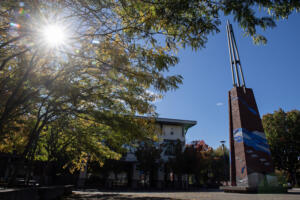After moving from California to Washougal in 2014, metal artist Angela Ridgway quickly settled into the Clark County arts community, opening a studio in downtown Vancouver and joining the Washougal Arts and Culture Alliance (WACA), helping the nonprofit organization to put on its annual Washougal Art Festival.
But as she became more familiar with other Washougal-based artists and their work, she came to the conclusion that they weren’t being exhibited as well as they could be.
“When I (participated in) the Clark County Open Studios Tour, I noticed there wasn’t anybody from Washougal,” she said. “I talked to some people from (WACA) about it, and they said, ‘If you can get six or so artists from Washougal for a studio tour, go for it.’ I started to search for local artists and I wasn’t disappointed.”
Those conversations led to the creation of the Washougal Studio Artists Tour, which debuted in May 2018 with 18 artists from a variety of mediums, including clay, wood, ceramics, acrylics and watercolors, fused glass, colored pencils and pens, jewelry and tattoo art. Nineteen artists participated in the second tour in May 2019.
“I wanted to show what kind of art community there is in Washougal,” Ridgway said. “I also wanted to see Washougal community members come out and support an event like that. We had a wonderful response the first year, and an even better response the second year, almost to the point that, as we started getting more and more artists wanting to be part of it for the third year, the question became, ‘How big do we want to get?’ It was a good problem to have.”





